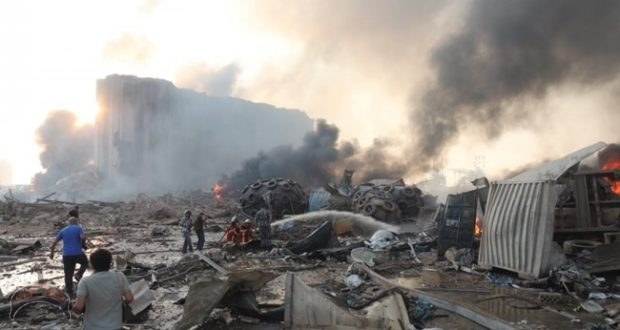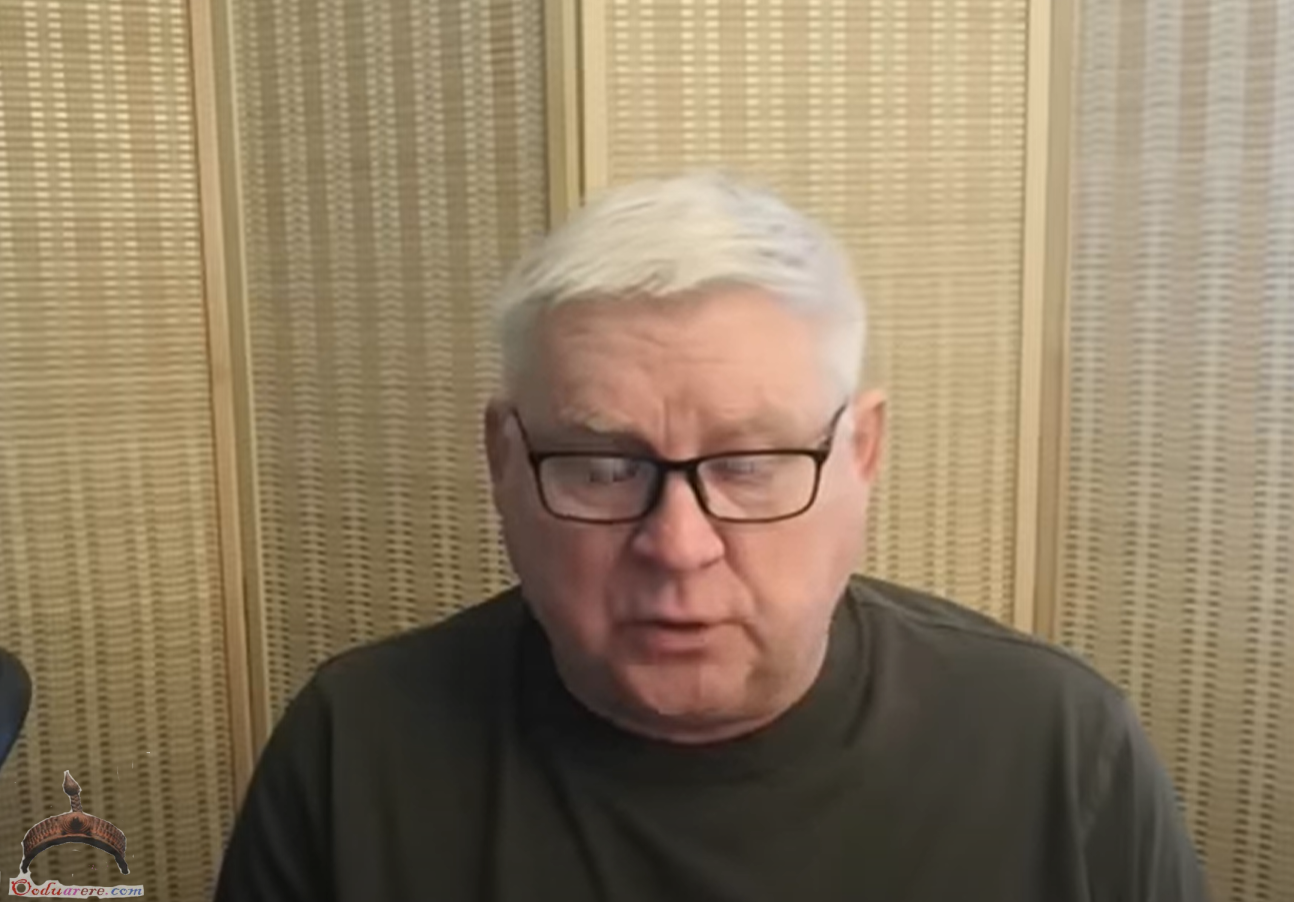by Pepe Escobar : Republished from Asia Times by permission of author
The narrative that the Beirut explosion was an exclusive consequence of negligence and corruption by the current Lebanese government is now set in stone, at least in the Atlanticist sphere.
And yet, digging deeper, we find that negligence and corruption may have been fully exploited, via sabotage, to engineer it.
Lebanon is prime John Le Carré territory. A multinational den of spies of all shades – House of Saud agents, Zionist operatives, “moderate rebel” weaponizers, Hezbollah intellectuals, debauched Arab “royalty,” self-glorified smugglers – in a context of full spectrum economic disaster afflicting a member of the Axis of Resistance, a perennial target of Israel alongside Syria and Iran.
As if this were not volcanic enough, into the tragedy stepped President Trump to muddy the – already contaminated – Eastern Mediterranean waters. Briefed by “our great generals,” Trump on Tuesday said: “According to them – they would know better than I would – but they seem to think it was an attack.”
Trump added, “it was a bomb of some kind.”
Was this incandescent remark letting the cat out of the bag by revealing classified information? Or was the President launching another non sequitur?
Trump eventually walked his comments back after the Pentagon declined to confirm his claim about what the “generals” had said and his defense secretary, Mark Esper, supported the accident explanation for the blast.
It’s yet another graphic illustration of the war engulfing the Beltway. Trump: attack. Pentagon: accident. “I don’t think anybody can say right now,” Trump said on Wednesday. “I’ve heard it both ways.”
Still, it’s worth noting a report by Iran’s Mehr News Agency that four US Navy reconnaissance planes were spotted near Beirut at the time of the blasts. Is US intel aware of what really happened all along the spectrum of possibilities?
That ammonium nitrate
Security at Beirut’s port – the nation’s prime economic hub – would have to be considered a top priority. But to adapt a line from Roman Polanski’s Chinatown: “Forget it, Jake. It’s Beirut.”
Those by now iconic 2,750 tons of ammonium nitrate arrived in Beirut in September 2013 on board the Rhosus, a ship under Moldovan flag sailing from Batumi in Georgia to Mozambique. Rhosus ended up being impounded by Beirut’s Port State Control.
Subsequently the ship was de facto abandoned by its owner, shady businessman Igor Grechushkin, born in Russia and a resident of Cyprus, who suspiciously “lost interest” in his relatively precious cargo, not even trying to sell it, dumping style, to pay off his debts.
Grechushkin never paid his crew, who barely survived for several months before being repatriated on humanitarian grounds. The Cypriot government confirmed there was no request to Interpol from Lebanon to arrest him. The whole op feels like a cover – with the real recipients of the ammonium nitrate possibly being “moderate rebels” in Syria who use it to make IEDs and equip suicide trucks, such as the one that demolished the Al Kindi hospital in Aleppo.
The 2,750 tons – packed in 1-ton bags labeled “Nitroprill HD” – were transferred to the Hangar 12 warehouse by the quayside. What followed was an astonishing case of serial negligence.
From 2014 to 2017 letters from customs officials – a series of them – as well as proposed options to get rid of the dangerous cargo, exporting it or otherwise selling it, were simply ignored. Every time they tried to get a legal decision to dispose of the cargo, they got no answer from the Lebanese judiciary.
When Lebanese Prime Minister Hassan Diab now proclaims, “Those responsible will pay the price,” context is absolutely essential.
Neither the prime minister nor the president nor any of the cabinet ministers knew that the ammonium nitrate was stored in Hangar 12, former Iranian diplomat Amir Mousavi, the director of the Center for Strategic Studies and International Relations in Tehran, confirms. We’re talking about a massive IED, placed mid-city.
The bureaucracy at Beirut’s port and the mafias who are actually in charge are closely linked to, among others, the al-Mostaqbal faction, which is led by former Prime Minister Saad al-Hariri, himself fully backed by the House of Saud.
The immensely corrupt Hariri was removed from power in October 2019 amid serious protests. His cronies “disappeared” at least $20 billion from Lebanon’s treasury – which seriously aggravated the nation’s currency crisis.
No wonder the current government – where we have Prime Minister Diab backed by Hezbollah – had not been informed about the ammonium nitrate.
Ammonium nitrate is quite stable, making it one of the safest explosives used in mining. Fire normally won’t set it off. It becomes highly explosive only if contaminated – for instance by oil – or heated to a point where it undergoes chemical changes that produce a sort of impermeable cocoon around it in which oxygen can build up to a dangerous level where an ignition can cause an explosion.
Why, after sleeping in Hangar 12 for seven years, did this pile suddenly feel an itch to explode?
So far, the prime straight to the point explanation, by Middle East expert Elijah Magnier, points to the tragedy being “sparked” – literally – by a clueless blacksmith with a blowtorch operating quite close to the unsecured ammonium nitrate. Unsecured due, once again, to negligence and corruption – or as part of an intentional “mistake” anticipating the possibility of a future blast.
This scenario, though, does not explain the initial “fireworks” explosion. And certainly does not explain what no one – at least in the West – is talking about: the deliberate fires set to an Iranian market in Ajam in the UAE, and also to a series of food/agricultural warehouses in Najaf, Iraq, immediately after the Beirut tragedy.
Follow the money
Lebanon – boasting assets and real estate worth trillions of dollars – is a juicy peach for global finance vultures. To grab these assets at rock bottom prices, in the middle of the New Great Depression, is simply irresistible. In parallel, the IMF vulture would embark on full shakedown mode and finally “forgive” some of Beirut’s debts as long as a harsh variation of “structural adjustment” is imposed.
Who profits, in this case, are the geopolitical and geoeconomic interests of US, Saudi Arabia and France. It’s no accident that President Macron, a dutiful Rothschildservant, arrived in Beirut Thursday to pledge Paris neocolonial “support” and all but impose, like a Viceroy, a comprehensive set of “reforms”. A Monty Python-infused dialogue, complete with heavy French accent, might have followed along these lines: “We want to buy your port.” “It’s not for sale.” “Oh, what a pity, an accident just happened.”
Already a month ago the IMF was “warning” that “implosion” in Lebanon was “accelerating.” Prime Minister Diab had to accept the proverbial “offer you can’t refuse” and thus “unlock billions of dollars in donor funds.” Or else. The non-stop run on the Lebanese currency, for over a year now, was just a – relatively polite – warning.
This is happening amid a massive global asset grab characterized in the larger context by American GDP down by almost 40%, arrays of bankruptcies, a handful of billionaires amassing unbelievable profits and too-big-to-fail megabanks duly bailed out with a tsunami of free money.
Dag Detter, a Swedish financier, and Nasser Saidi, a former Lebanese minister and central bank vice governor, suggest that the nation’s assets be placed in a national wealth fund. Juicy assets include Electricité du Liban (EDL), water utilities, airports, the MEA airline, telecom company OGERO, the Casino du Liban.
EDL, for instance, is responsible for 30% of Beirut’s budget deficit.
That’s not nearly enough for the IMF and Western mega banks. They want to gobble up the whole thing, plus a lot of real estate.
“The economic value of public real estate can be worth at least as much as GDP and often several times the value of the operational part of any portfolio,” say Detter and Saidi.
Who’s feeling the shockwaves?
Once again, Israel is the proverbial elephant in a room now widely depicted by Western corporate media as “Lebanon’s Chernobyl.”
A scenario like the Beirut catastrophe has been linked to Israeli plans since February 2016.
Israel did admit that Hangar 12 was not a Hezbollah weapons storage unit. Yet, crucially, on the same day of the Beirut blast, and following a series of suspicious explosions in Iran and high tension in the Syria-Israeli border, Prime Minister Netanyahu tweeted , in the present tense: “We hit a cell and now we hit the dispatchers. We will do what is necessary in order to defend ourselves. I suggest to all of them, including Hezbollah, to consider this.”
That ties in with the intent, openly proclaimed late last week, to bomb Lebanese infrastructure if Hezbollah harms Israeli Defense Forces soldiers or Israeli civilians.
A headline – “Beirut Blast Shockwaves Will Be Felt by Hezbollah for a Long Time” – confirms that the only thing that matters for Tel Aviv is to profit from the tragedy to demonize Hezbollah, and by association, Iran. That ties in with the US Congress “Countering Hezbollah in Lebanon’s Military Act of 2019” {S.1886}, which all but orders Beirut to expel Hezbollah from Lebanon.
And yet Israel has been strangely subdued.
Muddying the waters even more, Saudi intel – which has access to Mossad, and demonizes Hezbollah way more than Israel – steps in. All the intel ops I talked to refuse to go on the record, considering the extreme sensitivity of the subject.
Still, it must be stressed that a Saudi intel source whose stock in trade is frequent information exchanges with the Mossad, asserts that the original target was Hezbollah missiles stored in Beirut’s port. His story is that Prime Minister Netanyahu was about to take credit for the strike – following up on his tweet. But then the Mossad realized the op had turned horribly wrong and metastasized into a major catastrophe.
The problem starts with the fact this was not a Hezbollah weapons depot – as even Israel admitted. When weapons depots are blown up, there’s a primary explosion followed by several smaller explosions, something that could last for days. That’s not what happened in Beirut. The initial explosion was followed by a massive second blast – almost certainly a major chemical explosion – and then there was silence.
Thierry Meyssan, very close to Syrian intel, advances the possibility that the “attack” was carried out with an unknown weapon, a missile -– and not a nuclear bomb – tested in Syria in January 2020. (The test is shown in an attached video.) Neither Syria nor Iran ever made a reference to this unknown weapon, and I got no confirmation about its existence.
Assuming Beirut port was hit by an “unknown weapon,” President Trump may have told the truth: It was an “attack”. And that would explain why Netanyahu, contemplating the devastation in Beirut, decided that Israel would need to maintain a very low profile.
Watch that camel in motion
The Beirut explosion at first sight might be seen as a deadly blow against the Belt and Road Initiative, considering that China regards the connectivity between Iran, Iraq, Syria and Lebanon as the cornerstone of the Southwest Asia Belt and Road corridor.
Yet that may backfire – badly. China and Iran are already positioning themselves as the go-to investors post-blast, in sharp contrast with the IMF hit men, and as advised by Hezbollah Secretary-General Nasrallah only a few weeks ago.
Syria and Iran are in the forefront of providing aid to Lebanon. Tehran is sending an emergency hospital, food packages, medicine and medical equipment. Syria opened its borders with Lebanon, dispatched medical teams and is receiving patients from Beirut’s hospitals.
It’s always important to keep in mind that the “attack” (Trump) on Beirut’s port destroyed Lebanon’s main grain silo, apart from engineering the total destruction of the port – the nation’s key trade lifeline.
That would fit into a strategy of starving Lebanon. On the same day Lebanon became to a great extent dependent on Syria for food – as it now carries only a month’s supply of wheat – the US attacked silos in Syria.
Syria is a huge exporter of organic wheat. And that’s why the US routinely targets Syrian silos and burns its crops – attempting also to starve Syria and force Damascus, already under harsh sanctions, to spend badly needed funds to buy food
In stark contrast to the interests of the US/France/Saudi axis, Plan A for Lebanon would be to progressively drop out of the US-France stranglehold and head straight into Belt and Road as well as the Shanghai Cooperation Organization. Go East, the Eurasian way. The port and even a great deal of the devastated city, in the medium term, can be quickly and professionally rebuilt by Chinese investment. The Chinese are specialists in port construction and management.
This avowedly optimistic scenario would imply a purge of the hyper-wealthy, corrupt weapons/drugs/real estate scoundrels of Lebanon’s plutocracy – which in any case scurry away to their tony Paris apartments at the first sign of trouble.
Couple that with Hezbollah’s very successful social welfare system – which I saw for myself at work last year – having a shot at winning the confidence of the impoverished middle classes and thus becoming the core of the reconstruction.
It will be a Sisyphean struggle. But compare this situation with the Empire of Chaos – which needs chaos everywhere, especially across Eurasia, to cover for the coming, Mad Max chaos inside the US.
General Wesley Clark’s notorious 7 countries in 5 years once again come to mind – and Lebanon remains one of those 7 countries. The Lebanese lira may have collapsed; most Lebanese may be completely broke; and now Beirut is semi-devastated. That may be the straw breaking the camel’s back – releasing the camel to the freedom of finally retracing its steps back to Asia along the New Silk Roads.
 Ọmọ Oòduà Naija Gist | News From Nigeria | Entertainment gist Nigeria|Networking|News.. Visit for Nigeria breaking news , Nigerian Movies , Naija music , Jobs In Nigeria , Naija News , Nollywood, Gist and more
Ọmọ Oòduà Naija Gist | News From Nigeria | Entertainment gist Nigeria|Networking|News.. Visit for Nigeria breaking news , Nigerian Movies , Naija music , Jobs In Nigeria , Naija News , Nollywood, Gist and more








